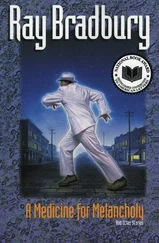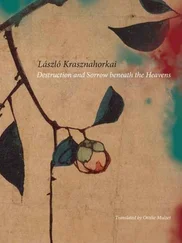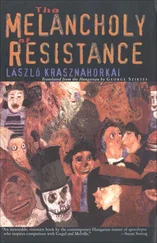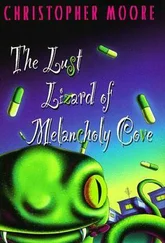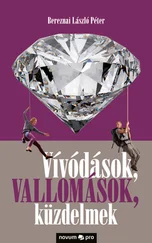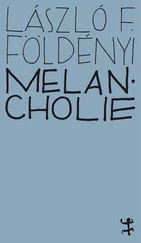The intimate link between modern art and Renaissance melancholia explains not only why, following the Middle Ages, the concept of melancholia had a fundamentally favorable ring to it, but also why representative melancholic figures appeared, mostly and understandably artists. The melancholics of the Middle Ages were anonymous, mentally sick people who were stuck outside the kingdom of God, who had ceased to exist, and therefore were remembered by nobody. During the Renaissance, however, melancholics showed the way; they were the ones most zealously obeying the command of the age, to build one’s own world — and artists were the first in submitting themselves to the divine and destructive might of melancholia. It was during the process of artistic composition that the endless creative power and boundless capacities of the personality became truly obvious, but this was also when its limitations, vulnerability, and unreliability came to light. Works of art with capricious claims came into being; behind finished works, however, stood the torsos of unfinished compositions, which often, and by no accident, emerged from the workshops of the greatest artists. The more powerful the demand, the stronger the imperilment; the apparent assurance and solidity of the greatest works were the product of the most precarious balancing: perfect works were always haunted by the possibility of annihilation. Indeed, it may be that it is precisely in creations of the greatest reputation and fame that one perceives death, which simultaneously threatens the work, the creator, and us. That annihilation is not symbolic; it is an evocation of death, in the strict sense of that word, that has to be confronted by every solitary person. And since we are mortal, loneliness, whether bashfully or defiantly, threatens everybody. The person at the center of the universe — and with the loss, or even just the dimming, of religious belief who doesn’t consider himself a center? — has to reckon solely with death; and anyone who fails to give up being the lord of creation is condemned to irresolvable solitude. 23Creative genius-melancholics are famed for their solitariness, and the silence that surrounds them is also well known: if I cannot exchange my own world, my view of the world, with anyone else, then it is even less conceivable in the case of someone who, even at the price of his own perdition, wishes to create a world of his own, one that differs fundamentally from anyone else’s. The aristocratic nature of art is a manifestation not of pride but of searching. Those who long for absolute autonomy are surrounded by solitude and silence (not chosen by themselves), and it is the price of creativity that they cannot take notice of anything else. The work of art is an offspring of the aforementioned imperilment — and what would be more irrational than to make that imperiled state and its result, the work, accessible to everyone. Art, from the Renaissance onward, was aristocratic, and it preserved that shield right down to the mid-twentieth century: it is just as difficult for the uninitiated to step into the world of Renaissance portraits as into the world of twentieth-century artworks that are supposedly hard to comprehend. No one should be permitted to confront death and annihilation — and the danger of such a confrontation makes a work great; to put this more sharply: the less a society occupies itself with art, the more viable it will be . Melancholia relates to the art of the modern age as it did to the mysteries in antiquity. As it was with the mysteries, art is ambiguous: it is democratic because anyone can enter, but it is aristocratic all the same because only a few can make use of that possibility, and even fewer can pass to the very end, where, like the protagonist of Schiller’s poem “The Veiled Image at Sais,” drawing aside the veil concealing the truth inherent in poetry, they glimpse the nothingness that threatens them. It is these few who open up to melancholia — and just as a society cannot be, on the whole, melancholic, not everyone can be equally receptive to art. Art is “dangerous,” at least in the modern age, when one of its main tasks is to smuggle solitude and the ultimate silence summoned by Hamlet’s last words into the world of others. Great works disconcert one almost as much as does love: they abduct one from one’s everyday life only to confuse everything for one. They are promising and yet offer nothing. One would most gladly identify with them, one would love to gobble them up, but instead they spurn us, and they provoke a nostalgia that, because of its aimlessness, cannot be assuaged. One might call art immoral, yet on coming face-to-face with the works, it turns out that “morality” and “immorality” are ridiculously puffed-up words that lose their ordinary meaning in art. We are helpless against art; we feel that we should not expose ourselves to the works; we know beforehand that we will fall short and go astray; we fear the incomprehension that will burst on us; yet we stubbornly go ahead, just as we stubbornly scratch open our wounds again and again.
Let us stay with art. “The greater part of the craftsmen who had lived up to that time [the time of Michelangelo],” Vasari writes in the “Life of Raphael,” “had received from nature a certain element of savagery and madness, which, besides making them strange and eccentric, had brought it about that very often there was revealed in them rather the obscure darkness of vice than the brightness and splendour of those virtues that make men immortal” ( Lives of the Most Excellent Painters, Sculptors, and Architects , 4:209). A sixteenth-century writer encouraged Michelangelo’s apprentice Raffaele da Montelupo as follows: “Since you are a sculptor, you have the privilege of any extravagance.” Paulucci, an envoy of Ferrara, wrote about the great Raphael: “He is inclined to melancholy like all men of such exceptional talent” (quoted in Wittkower and Wittkower, Born under Saturn , 104). But melancholia did not just lie dormant; not a few artists were regarded as patently melancholic. According to Boccaccio, Dante was melancholic, and so were, according to Vasari, Michelangelo, 24Parri Spinelli, and Lorenzo Vecchietta; also melancholic were Raphael, Annibale Caracci, Guido Reni, and Carlo Dolci; among northern Europeans, Dürer, Hugo van der Goes, and Adam Elsheimer, who was active in Rome. The names proliferate, and it is not long before the average person comes to recognize artists primarily through their eccentricity. 25One might add that the more the civil polity of Europe is consolidated, the more condemnable eccentricity will be perceived. Eccentricity (which, like antique ecstasy, denotes stepping out of oneself) is a sign of the frequent melancholia among Renaissance artists, a concomitant of loneliness and creativity — of an introversion without which it was impossible not only to create a new world but also to become an autonomous person. (That “turning inward” was for a long time a symbolic gesture, of course: the heroic determination with which Renaissance intellectuals realized themselves made them turn toward the world, but since that was tantamount to ignoring the given framework and rules of the existing world, the use of the phrase “turning inward” is justified.) In 1585, Romano Alberti explained the frequent melancholia of painters in the following manner: “Painters become melancholic because, wanting to imitate, they must retain visions fixed in their minds so that later they may reproduce them as they have seen them in reality. And this not only once but continuously, such being their task in life. In this way they keep their minds so abstracted and detached from reality, that in consequence they become melancholic” (quoted in Wittkower and Wittkower, Born under Saturn , 105). Alberti obviously saw this paradox as the most natural thing in the world, which sounds astonishing only to the empirically minded public opinion of our day: to copy reality, artists have to disregard it. This was a matter not just of the Platonism so much alive in the Renaissance, but also of the world-generating function of art in general. An artist has to create a new world — not from nothing, but from a set of things awaiting composition and arrangement. Material has to be taken from the sensory world, but earthly sensuality has to be left behind, in the manner of a god, in order to be able to create a new sensuality. Mimesis, as mentioned in speaking about Sidney, is not the mechanical reproduction of what exists but the representation of ideas or, as Shakespeare avows, the imitation of the divine act of creation. That makes it absolute, unique, and unparalleled, and its product, the work of art, incomparable and absolutely self-referential. Leon Battista Alberti, in the mid-fifteenth century, called the artist an alter deus , an alternative god, and although this echoed the belief of the Middle Ages according to which God was the supreme artist, it was not hard to spot the profanation of God as artist. 26In Alberti’s opinion, painting was not a handicraft but “a divine force.” In a letter addressed to Peregrino Agli ( De divino furore , 1 December 1457), Ficino links art to divine frenzy, and the holy madness that, according to St. Bernard, characterizes saints, pertains in Renaissance public opinion to artists — those who try to become God in God’s stead and who do not hark back to a distant center but are themselves the centers of the universe. In the Middle Ages, ecstasy was an entrance into God’s innermost circle. From the Renaissance onward, it regained its original meaning: ecstatic artists step out of the constraints of the world to create new worlds from their own resources, and ecstatic melancholics, who were identified with bloodthirsty despots on the Elizabethan and Jacobean stage, annihilate everything in order to step out of themselves, thereby preparing their own downfall.
Читать дальше

